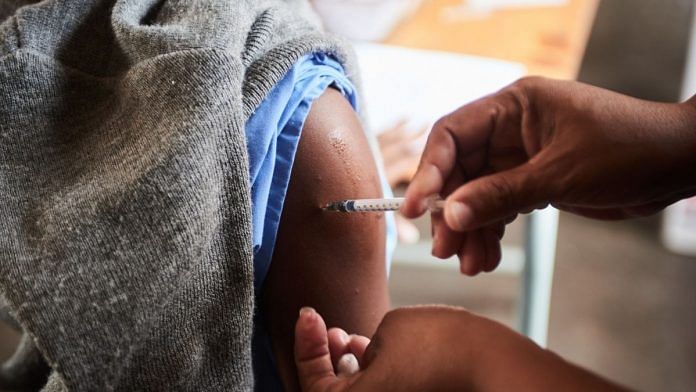Johannesburg: New omicron sublineages, discovered by South African scientists this month, are likely able to evade vaccines and natural immunity from prior infections, the head of gene sequencing units that produced a study on the strains said.
The BA.4 and BA.5 sublineages appear to be more infectious than the earlier BA.2 lineage, which itself was more infectious than the original omicron variant, said Tulio de Oliveira, the head of the institutes at the universities of KwaZulu-Natal and Stellenbosch.
With almost all South Africans either having been vaccinated against the coronavirus or having had a prior infection, the current surge in cases means that the strains are more likely to be capable of evading the body’s defenses rather than simply being more transmissible, de Oliveira said.
There are “mutations in the lineages that allow the virus to evade immunity,” he said in a response to queries. “We expect that it can cause reinfections and it can break through some vaccines, because that’s the only way something can grow in South Africa where we estimate that more than 90% of the population has a level of immune protection.”
Early warning
South Africa is seen as a key harbinger of how the omicron variant and its sublineages are likely to play out in the rest of the world. South African and Botswanan scientists discovered omicron in November and South Africa was the first country to experience a major surge of infections as a result of the variant.
The new sublineages account for about 70% of new coronavirus cases in South Africa, de Oliveira said in a series of Twitter postings.
“Our main scenario for Omicron BA.4 and BA.5 is that it increases infections but that does not translate into large hospitalizations and deaths,” he said.
A rapid increase in infections in the last 2 weeks was due to BA.4 and BA.5. Albeit coming from a low number. The 6,000 infections yesterday are underestimated as the test positivity ratio is around 20%. SA did not have a BA.2 Omicron wave-like Europe but only a large BA.1 wave. pic.twitter.com/8b4PZe6CkW
— Tulio de Oliveira (@Tuliodna) April 28, 2022
South Africa recorded 4,146 new cases with a test positivity rate of 18.3% on Thursday. That compares with 581 cases and a positivity rate of 4.5% on March 28.
“It is not clear if South Africa has entered the fifth wave, but the numbers suggest that we are on the brink of one,” Health Minister Joe Phaahla said on a conference call on Friday. “Experts have told us that the fifth wave was expected to begin towards the middle of May.”
More than half of new infections have been reported in central Gauteng province, with the coastal KwaZulu-Natal and Western Cape regions accounting for the bulk of the remaining cases.
“What is clear is that we are still at great risk of Covid-19, especially as we go into a very long winter where people spend more times indoors, which brings the risk of high spread,” Phaahla said. “The Easter and other religious holidays could have resulted in a spike of infections.”
A closer look at the percentage of genomes shows that in SA over 70% of recent genomes are BA.4 and BA.5. The most recent genome of 20 of April and genomics surveillance increasing across all provinces. pic.twitter.com/BOm2kWWEKV
— Tulio de Oliveira (@Tuliodna) April 28, 2022
Waasila Jassat, a public health specialist at the National Institute of Communicable Diseases, said on the call that while hospitalizations are rising, there is yet to be a significant increase in deaths.
“Increases have been recorded among all age groups, but the highest number of cases are currently in the 10- to 14-year-old age groups,” she said.
The sublineages have been detected in seven of South Africa’s nine provinces and 20 countries worldwide.
“There is quite a lot of diversity in this omicron family of lineages,” Richard Lessells, an infectious disease specialist at the KRISP genomics institute, said on the call. This could explain why the newly identified sublineages are causing an upsurge infections, he said. –Bloomberg
Also read: 45% of samples sequenced in India since January had Omicron, shows Covid lab network INSACOG



